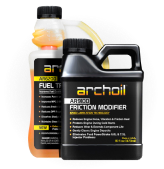How does a 7.3L die?
How does a 7.3 truck die? This is a 2001 utility body truck with close to 300K miles on it. The transmission is grinding into gear, and the clutch and breaks are tired. Let’s take a closer look at the engine. This truck has a dead skip in one of the cylinders and loss of compression. Usually this is because of a piston ring failure. Often this is caused by spraying ether or starting fluid into the engine which can crack a piston.
We are going to jump the solenoid so you can hear the dead spot in it where it speeds up. You hear how it has that fast spot in there when it cranks. When you crank it, especially when it is cold, there is a lot of smoke and it smells like burning oil. When a piston ring is bad, the truck will start consuming oil. “Is your truck consuming oil” is one of the first things I ask people. You can see how there is a lot of smoke coming out of the tailpipe which is another key indicator that there is oil in the muffler or oil in the catalytic converter.
Here is a 275K mile 2001 F250 rear wheel drive used to pull horse trailers with a bit of tuning on it. The customer complained about oil smell and lack of compression. When we pulled the cylinder head off, the #3 cylinder had a real bad problem. The piston ring came apart. This engine will have to be totally disassembled and rebuilt. The #3 cylinder will have to be sleeved because we won’t be able to repair it with just boring. The other 7 cylinders will be able to be bored. The other cylinder heads will be rebuilt and brought up to specification. When the piston came out of #3, the piston rings just fell apart and is burnt. You can also see all the heat that has been put into the motor from the tuning. Every one of the pistons has some heat in them. That is one of the tell-tale signs that there was a lot of heat in this one cylinder. Otherwise, there is very little wear and tear on the pistons.
We have our block and crank back from the machine shop and the cylinder heads are rebuilt. You can see in the #3 cylinder where the sleeve was installed. When you look at the top of the bore, you can actually see the edge of the sleeve. It is basically a steal liner that gets put down into the block to restore the bore so it can be used again. The rebuilding of the connecting rods is a very crucial part of rebuilding the engine. The bottom side of the rod was resized by take just a little bit of material out, closed, resized correctly and chamfer the edge. One of the most important things when you rebuild a rod is to replace the brass end inside of the short end of the rod. Often people don’t replace this part and the wrist pin will rattle inside and make the engine run a lot louder.
A new set of lifters are going to be installed. One fact that a lot of people don’t know is that the only part numbers that crosses between a 7.3, a 6.0 and a 6.4 are the lifters. It is very important to put new lifters.
Camshafts generally don’t fail in these engines. The camshaft is built of steal so they don’t go bad very often. This one is marked so we wouldn’t re-use it. Fortunately, we have some in the shop we can use.
Cylinder heads are remanufactured with new valves, new guides and also new cups in each one of the holes. It is very important to do all of these things to ensure a quality rebuild. We will put new oil galley plugs in it so that there is no leakage there.
These engines don’t have to be noisy. It isn’t supposed to have any metallic rap or knock in it anywhere. A bad set of injectors or a missing bushing on the small end of the connecting rod will make that metallic sound. It costs $400-600 in rebuilding the rods properly but it is a very important part in the rebuilding process.
Why would you spend close to $7,000 rebuilding an engine in an old 2001 model truck? It is the same reason that I keep old Spot running; it is that good of a truck. I like my 2010, but I like driving Spot most of the time. You know it is going to be there for you for the next 200K-300K miles and not give you a moment of trouble. Yes, 7.3s breakdown and wear out and if you shoot them with ether they will break earlier. But if you take care of them, that 7.3 will go a long time. What killed this truck was tuning.
What can be done to prevent this? First, keep an eye on exhaust gas temperatures. Tuning, hot tuning can cause this type of problem. The other thing that no one thinks about is fuel pressure. If you don’t have enough fuel pressure, your injectors will run out of fuel and the power train control module will advance timing and can cause this same problem. A bad fuel pump, clogged screens in your fuel tank, fuel filters that haven’t been serviced correctly or lack of fuel pressure can cause this type of damage to the engine.
Keeping up with the maintenance of the vehicle, the fuel filters, keeping good oil in it, and most importantly keeping an eye on the exhaust gas temperature either with a gauge or with an Edge type monitoring system is probably the best way to make these engines last forever. Heat is what kills the engine. ~Bill Hewitt

